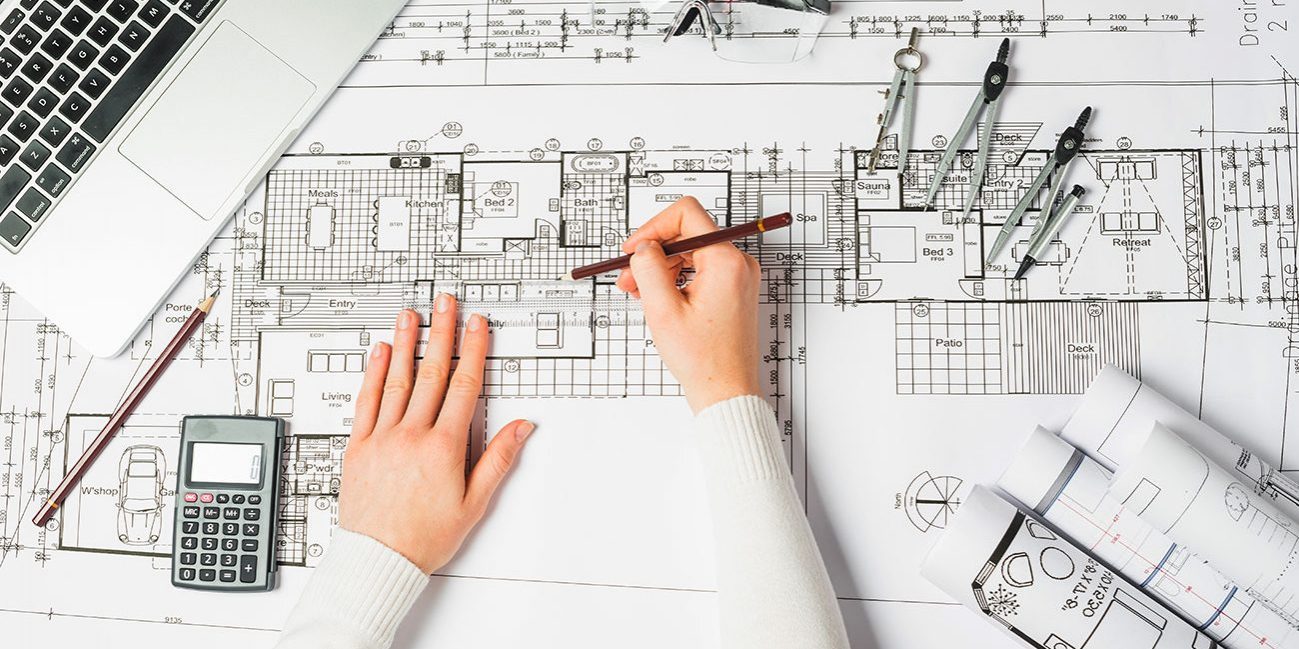Recognizing the Diverse Job Paths Available for Aspiring Architect
As an ambitious Architect, you have a globe of job paths awaiting you. Each path supplies one-of-a-kind difficulties and opportunities to use your creativity and technological know-how. Whether you're attracted to conventional style or the subtleties of lasting style, there's a specific niche that straightens with your interests. Comprehending these varied options can shape your specialist trip, yet which instructions will you pick to explore initially?
Standard Style: Creating Structures and buildings
Traditional design concentrates on developing buildings and structures that blend capability with aesthetic allure. Your layouts can mirror social heritage, showcasing local traditions while meeting modern-day needs.
You'll develop abilities in composing, model-making, and site analysis, allowing you to visualize and connect your concepts properly. Engaging with clients, you'll need to recognize their vision and equate it into feasible styles.
Furthermore, building codes and sustainability techniques are important in your work, guaranteeing your frameworks are ecologically friendly and secure. As you expand in your profession, you'll locate chances in household, industrial, or even restoration tasks, each offering one-of-a-kind obstacles. Accepting traditional design leads the way for a fulfilling career that admires the past while shaping the future.
Urban Planning: Forming Communities and Public Spaces
As an ambitious Architect, you can play a crucial duty as a metropolitan organizer, transforming just how communities operate and engage. By employing community involvement techniques, you'll assure that locals have a voice in forming their setting. Plus, incorporating sustainable style concepts will certainly assist develop areas that not just fulfill today's requirements yet likewise secure the future.
Role of Urban Planners
While many could think of architects as the single dreamers behind structures, urban planners play a necessary duty in shaping the broader landscape of neighborhoods and public areas. By teaming up with different stakeholders, you'll assist create parks, transport systems, and residential locations that advertise social interaction and ease of access. Your experience in spatial layout and neighborhood dynamics permits you to envision future growth while maintaining social heritage.
Community Involvement Strategies
Reliable neighborhood interaction strategies are essential for city organizers to ensure that the voices of residents are listened to and valued in the planning procedure. To cultivate significant discussion, you must prioritize open forums and workshops where area members can share their ideas and concerns. Usage studies and social media to get to a wider target market, making sure diverse viewpoints are included. Teaming up with local companies can boost count on and promote deeper links. It is necessary to offer clear details about suggested projects and decision-making processes, enabling citizens to feel enlightened and empowered. By actively paying attention and integrating responses, you'll create areas that reflect the area's needs, eventually bring about more lasting and successful metropolitan settings. Embrace openness and continuous dialogue for enduring influence.
Sustainable Design Principles
When developing urban areas, incorporating lasting design concepts is critical for producing environments that grow both environmentally and socially. Take into consideration incorporating eco-friendly rooms, like yards and parks, to improve biodiversity and improve air top quality.
Designing with water preservation in mind is likewise essential-- consider rain yards and permeable surface areas to handle stormwater. Entailing neighborhood participants during the planning procedure guarantees that the rooms you create satisfy their requirements and encourage social communication. By embracing these principles, you'll add to vivid, lasting urban landscapes that profit everyone.

Landscape Style: Producing Sustainable Exterior Atmospheres
As you explore landscape style, you'll find vital design concepts that produce practical and beautiful outdoor rooms. Lasting practices play an important function in guaranteeing these atmospheres flourish while minimizing ecological impact. And also, you'll find a variety of job chances that permit you to make a genuine distinction in how people communicate with nature.
Design Principles in Landscape
Recognizing layout concepts in landscape architecture is crucial for creating lasting exterior settings that integrate with nature. You'll need to contemplate elements like scale, equilibrium, and percentage to guarantee your layouts really feel natural and welcoming. In addition, pay focus to seasonal adjustments, making with materials that match the environments year-round.
Sustainable Practices Summary
Sustainable techniques in landscape style not just concentrate on aesthetics but additionally focus on ecological health and resource preservation. By incorporating native plants, you enhance biodiversity and lower the demand for chemical plant foods and pesticides. Executing reliable watering systems helps save water and reduces runoff, shielding close-by ecosystems. You can develop spaces that advertise soil wellness, such as utilizing organic products and exercising permaculture principles. In addition, including eco-friendly framework, like rainfall gardens and permeable pavements, help in stormwater management and lowers city warm. When you create exterior atmospheres with sustainability in mind, you add to a healthier earth and offer rooms that foster neighborhood connection. Inevitably, these methods guarantee your styles profit both people and the atmosphere for several years to find.
Career Opportunities Exploration
With a strong structure in lasting techniques, landscape style uses a variety of job courses that allow you to make a purposeful impact on the setting. Urban planners often team up with landscape designers to produce eco-friendly rooms in city setups, enhancing city livability. If you're enthusiastic regarding education, consider ending up being a landscape architecture teacher, inspiring future generations.
Lasting Layout: Concentrating On Eco-Friendly Practices
As you explore your job in design, welcoming green methods can set you apart in an affordable area. Sustainable style focuses on developing buildings that lessen environmental effect while boosting occupant health. By integrating eco-friendly materials, energy-efficient systems, and sustainable structure strategies, you'll contribute to a greener future.
Beginning by acquiring understanding of environment-friendly accreditations like LEED or BREEAM, which can strengthen your credentials. Take into consideration how natural light, air flow, and thermal performance can optimize layout. Collaborate with engineers and environmental experts to introduce solutions that lower waste and preserve resources.
Don't forget the importance of community involvement-- appealing neighborhood stakeholders can motivate layouts that harmonize with the setting. As customers significantly focus on sustainability, your know-how in eco-friendly practices will certainly not just bring in click here for more info tasks yet additionally fulfill your enthusiasm for accountable design. Accept this crucial facet of the career, and enjoy your career prosper.
Historic Conservation: Securing and Recovering Cultural Heritage
While you commence on your building trip, take into consideration the crucial role of historic preservation in keeping our social heritage. This area concentrates on the defense and reconstruction of substantial structures, sites, and structures that tell the tales of our past. By participating in historic preservation, you'll aid secure the building heritage that shapes community identification.
As a historic preservation Architect, you'll analyze historical value and analyze the problem of structures. You'll function carefully with historians and conservationists to guarantee genuine remediation strategies are utilized. This occupation path permits you to blend creative thinking with research, allowing you to develop services that value original products and craftsmanship.
Your work not just contributes to sustainability by recycling existing buildings however also promotes a sense of pride within areas. Embracing this course will assist you become a guardian of background, maintaining the stories and visual appeals that improve our lives.
Interior Style: Enhancing Indoor Spaces
Historic preservation and indoor style both share a commitment to enhancing the constructed environment, however they concentrate on various aspects. While historic conservation emphasizes preserving a framework's social and historic worth, indoor style zeroes in on optimizing indoor rooms for performance and aesthetics.
As an aspiring Architect, you'll find that interior architecture permits you to mix creativity with technical skills. You'll develop areas that not just look good but also promote comfort and efficiency. This field entails recognizing just how light, shade, and products connect within a space, affecting mood and usability.
You'll service various projects, from residential homes to industrial workplaces, making certain that each setting fulfills the demands of its passengers. By prioritizing individual experience, you can transform interiors right into useful and motivating spaces, making a considerable influence on how individuals engage with their environments. Embrace the possibility to improve indoor environments and shape the means individuals live and function.
Industrial Design: Combining Capability With Aesthetics
Industrial layout plays an important role in creating items that perfectly blend aesthetics with capability, making sure that what you utilize daily is not only aesthetically attractive but additionally functional. As a hopeful Architect, you could involve yourself in this area, concentrating on designing every little thing from furnishings to customer electronics. Your job involves recognizing user requirements, materials, and manufacturing processes, permitting you to produce cutting-edge options that enhance day-to-day experiences.
In industrial design, you'll commonly team up with marketing experts, suppliers, and engineers, ensuring that your designs are not just beautiful but also viable. This occupation course uses a dynamic environment where creativity fulfills usefulness, making it a gratifying choice for architects interested in forming the products of tomorrow.
Frequently Asked Inquiries
What Educational Credentials Do I Need to Become an Engineer?
To end up being an architect, you'll require an expert level in style, normally a Bachelor's or Master's. Additionally, you'll need to complete an internship and pass the Architect Enrollment Assessment to practice legitimately.
Are There Certification Needs for Different Building Occupation Paths?
Yes, there're certification needs for various building courses. Architect. You'll need to pass exams, total internships, and occasionally pursue specialized training, relying on your picked focus, like landscape style, metropolitan layout, or historic conservation
What Software Program Skills Are Essential for Designers Today?

Just How Can I Gain Practical Experience While Examining Design?
You can acquire practical experience by interning at building firms, joining style competitions, volunteering for area projects, or teaming up with classmates on real-world jobs. These chances boost your abilities and build valuable connections in the sector.
What Work Opportunities Exist Outside Conventional Design Firms?
You can explore different job chances read more outside traditional design firms, like city planning, interior decoration, landscape architecture, building and construction management, realty development, and even roles in sustainability consulting. Each offers special challenges and benefits.
Whether you're attracted to conventional style or find more info the nuances of sustainable style, there's a niche that lines up with your rate of interests.When designing metropolitan rooms, incorporating sustainable style concepts is crucial for producing settings that thrive both ecologically and socially.As you explore landscape design, you'll find crucial design principles that produce attractive and useful outside rooms.Understanding design principles in landscape architecture is important for producing sustainable exterior environments that harmonize with nature.In industrial design, you'll often collaborate with engineers, manufacturers, and online marketers, making sure that your layouts are not just attractive but also viable.